Sex ratio remained at 102 males per 100 females
Of the 784,646 household population in 2015, males accounted for 50.4 percent while females comprised 49.6 percent. These figures resulted to a sex ratio of 102 males for every 100 females, the same sex ratio recorded in 2010 and 200.

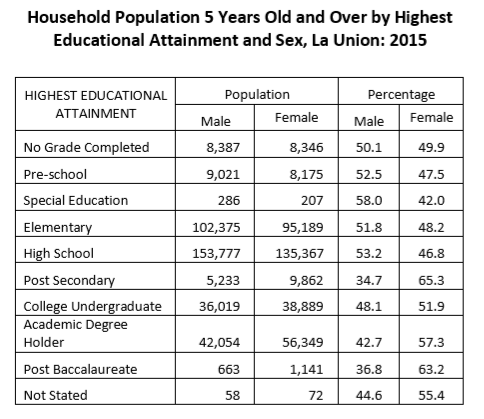
Females dominated males among the voting age population
The voting age population (18 years and over) accounted for 65.9 percent of the household population of the province in 2015, up from 64.0 percent in 2010. There were more females (50.4 percent) than males (49.6 percent) among the voting age population.
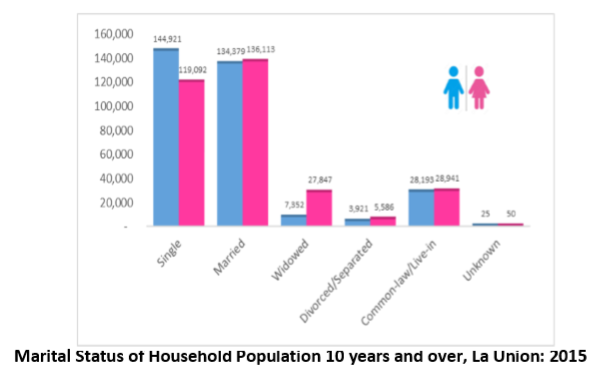
There were more males than females among
the never-married persons
Of the household population 10 years old and over, 42.5 percent were married while 41.5 percent were never married. The rest of the population were categorized as follows: common-law/live-in marital arrangement (9.0 percent), widowed (5.5 percent) and divorced/separated (1.5 percent).
Among the never married persons, 54.9 percent were males while 45.1 percent were females. For the rest of the categories for marital status, the females outnumbered the males.

More females had attained higher levels of education
Of the household population aged five years and over in 2015, 40.6 percent had attended or completed secondary education, 27.8 percent had reached or finished elementary education, 13.8 percent obtained college degree, and 10.5 percent were college undergraduates.
Among those with an academic degree, females (57.3 percent) outnumbered males (42.7 percent). Similarly, more females (63.2 percent) than males (36.8 percent) had pursued post baccalaureate courses.
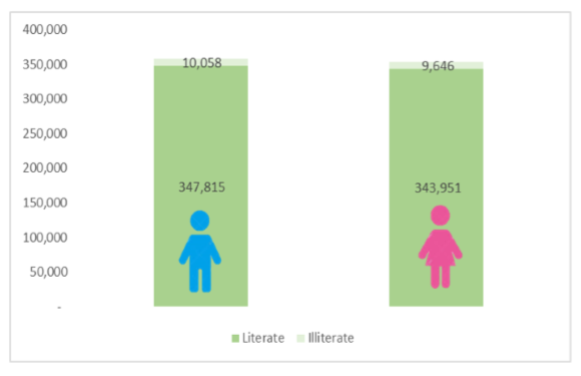
Literacy of Household Population by Sex, La Union: 2015
The literacy rate of La Union in 2015 was recorded at 97.2, 50.3 percent of which were male while the remaining 49.7 were female. By sex, female (97.3) has higher literacy rate than male (97.2).
Female overseas workers outnumbered their male counterpart 
More than fifty percent of the Overseas Filipino Workers in La Union were female with a total number of 20,462, while their male counterpart has a total number of 15,450. This number accounted to 6.4 percent of the total household population ten years old and over in La Union.
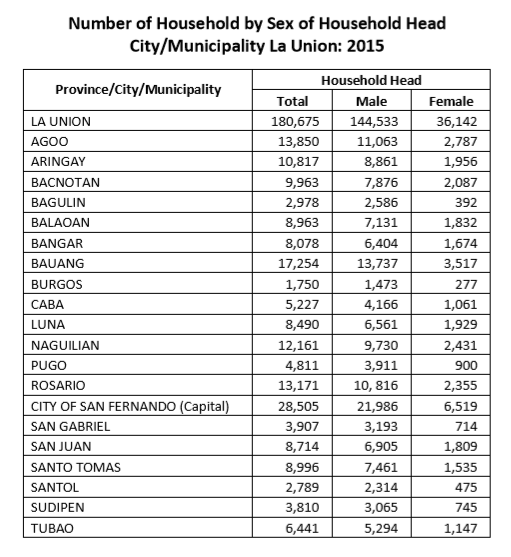
One for every five household head was female
Out of 180,675 households in the province 20 percent were headed by a female (36,142), while the remaining 80 percent were headed by a male (144,533). Of the total number of households 15.8 percent were located in the provincial capital (San Fernando City), followed by Bauang (9.5 percent), Agoo(7.6 percent) and Rosario (7.3 percent).
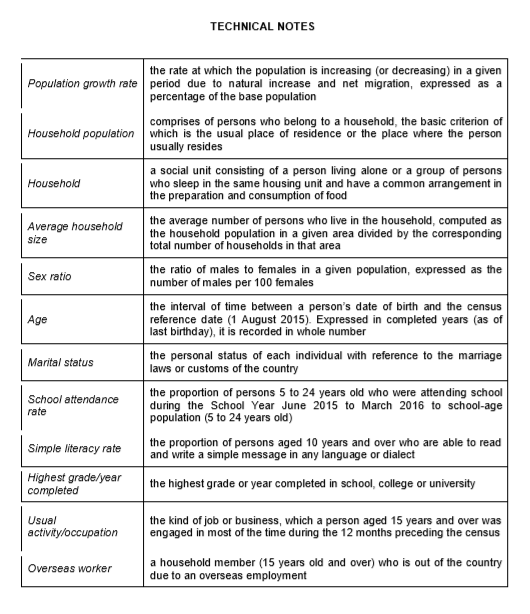
The 2015 Census of Population (POPCEN 2015) was undertaken by the Philippine Statistics Authority (PSA) in August 2015 as mandated by Republic Act No. 10625, otherwise known as the Philippine Statistics Act of 2013. It was the 14th census of population that was undertaken since the first census in 1903. POPCEN 2015 was designed to take an inventory of the total population all over the Philippines and collect information about their characteristics. Census day for the POPCEN 2015 was August 1, 2015 (12:01 a.m.). POPCEN 2015 made use of the de jure concept of enumeration wherein households and persons are enumerated in the area where they usually reside as of the census reference date. Enumeration lasted for about 25 days, from 10 August to 6 September 2015. Enumeration was extended until 15 September 2015 for large provinces and some highly urbanized cities.
NINO E. TUAZON
(Supervising Statistical Specialist)
Officer-in-Charge

